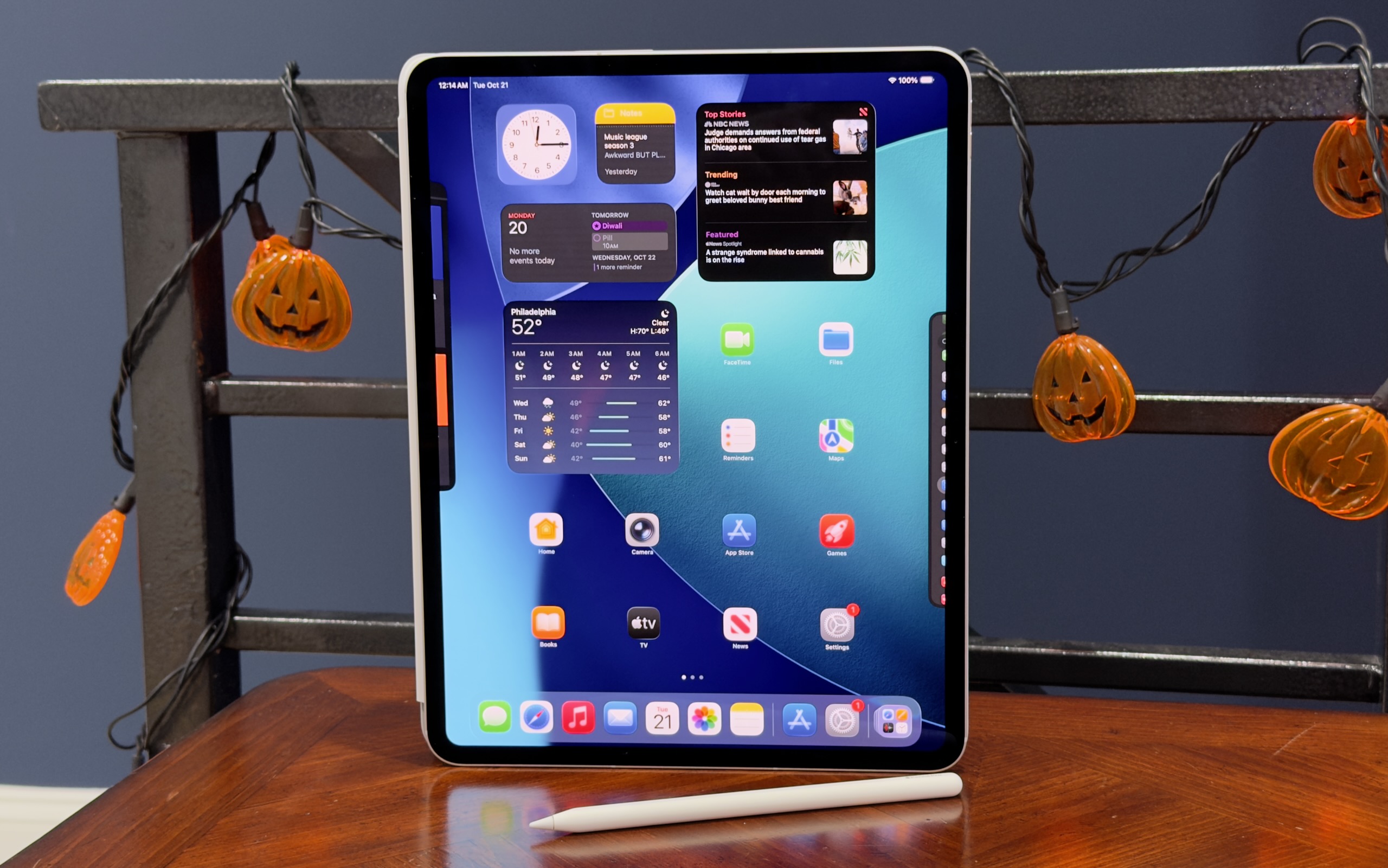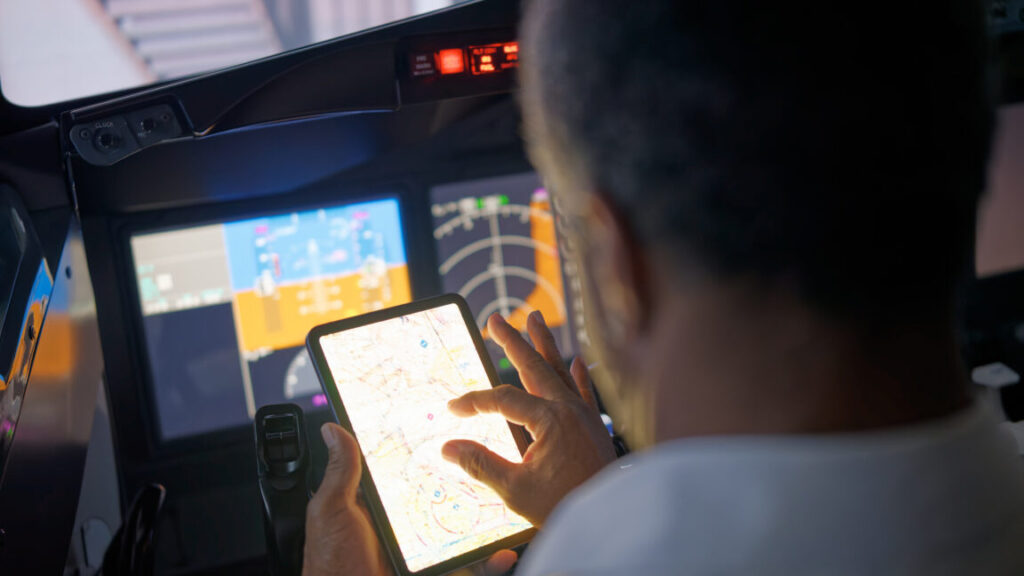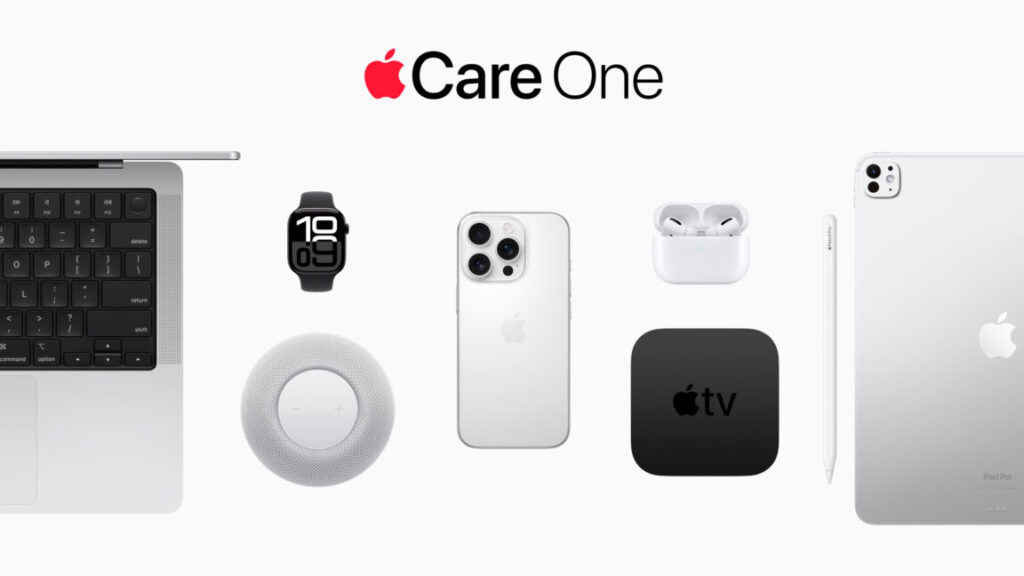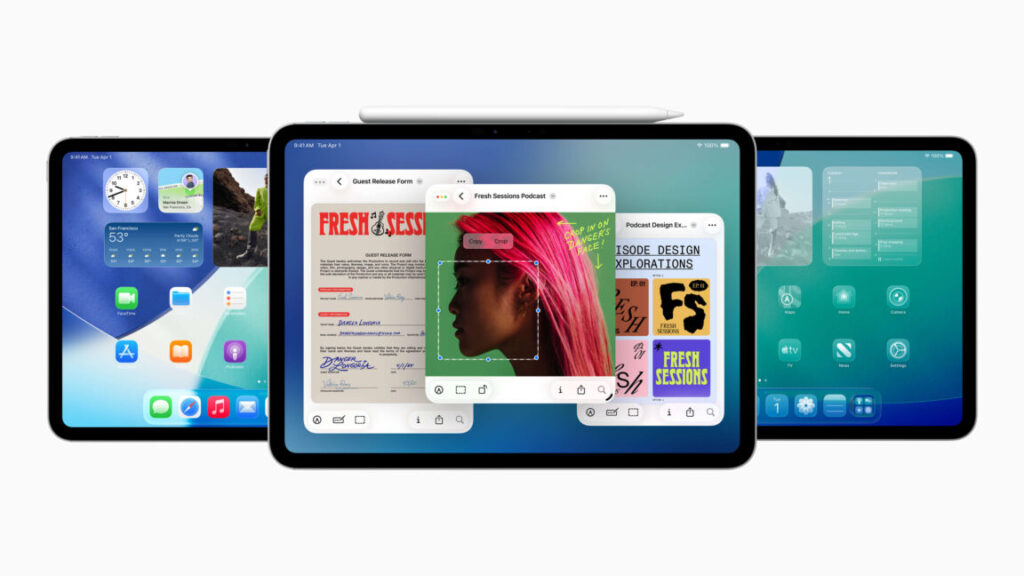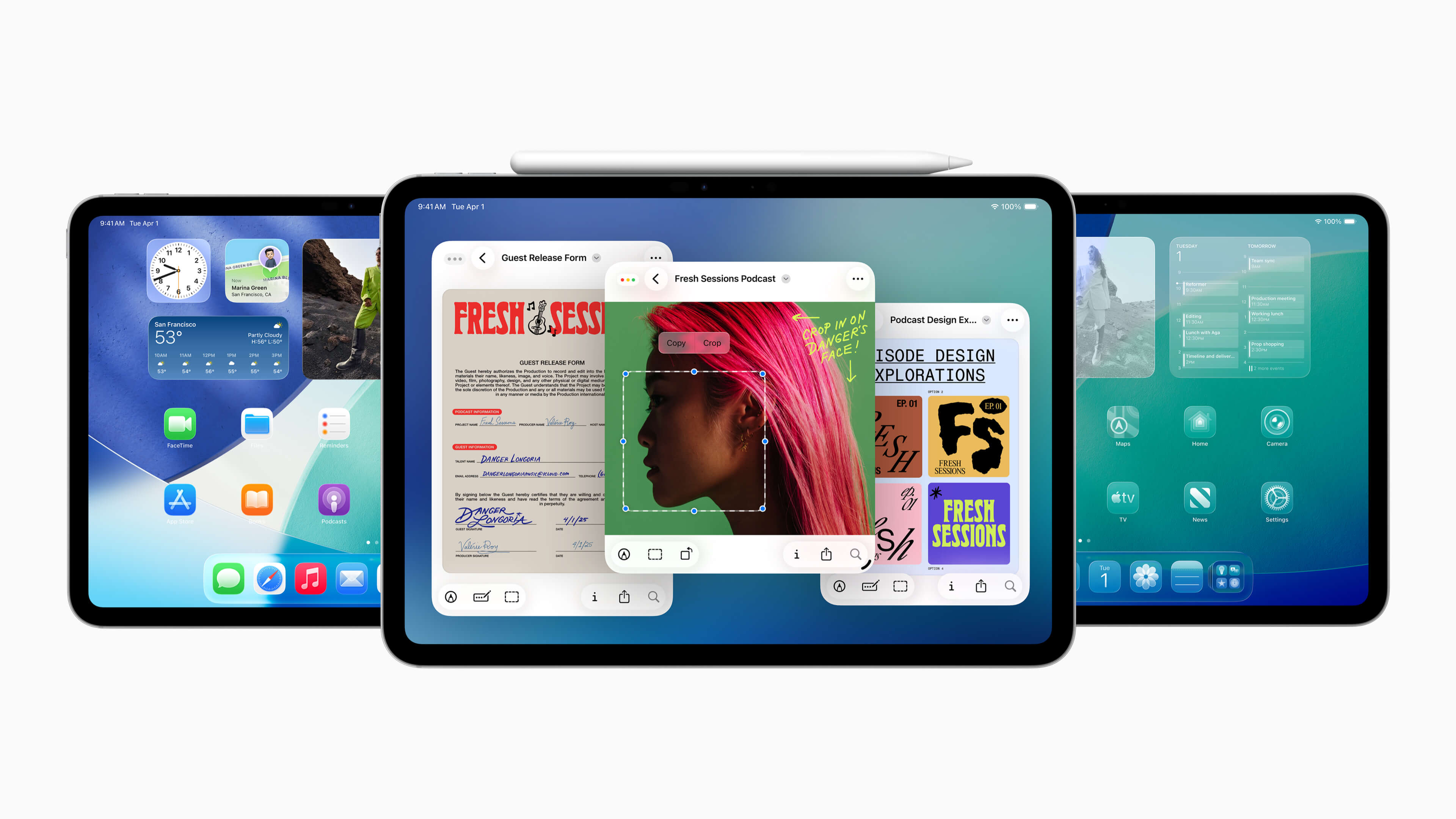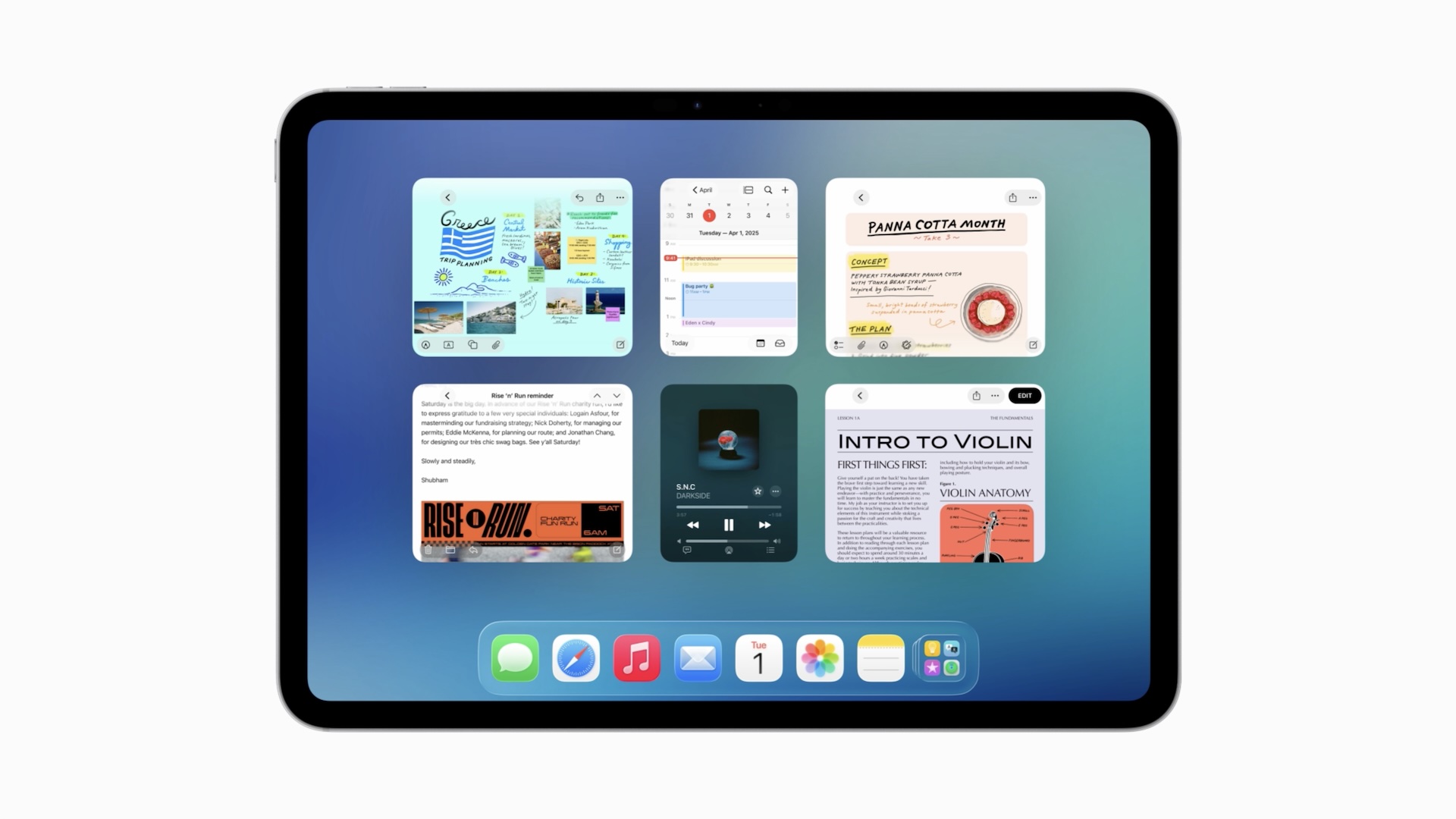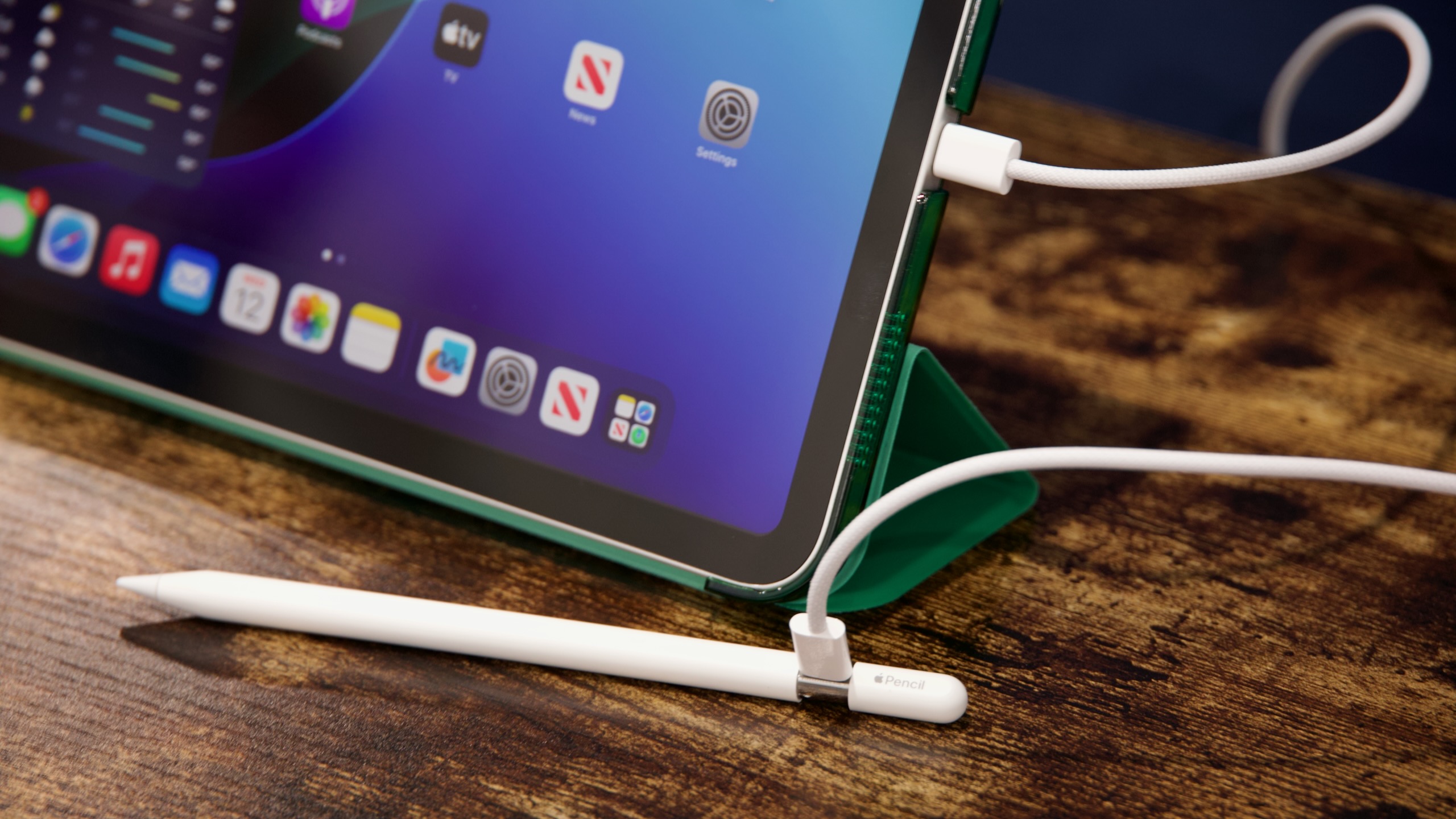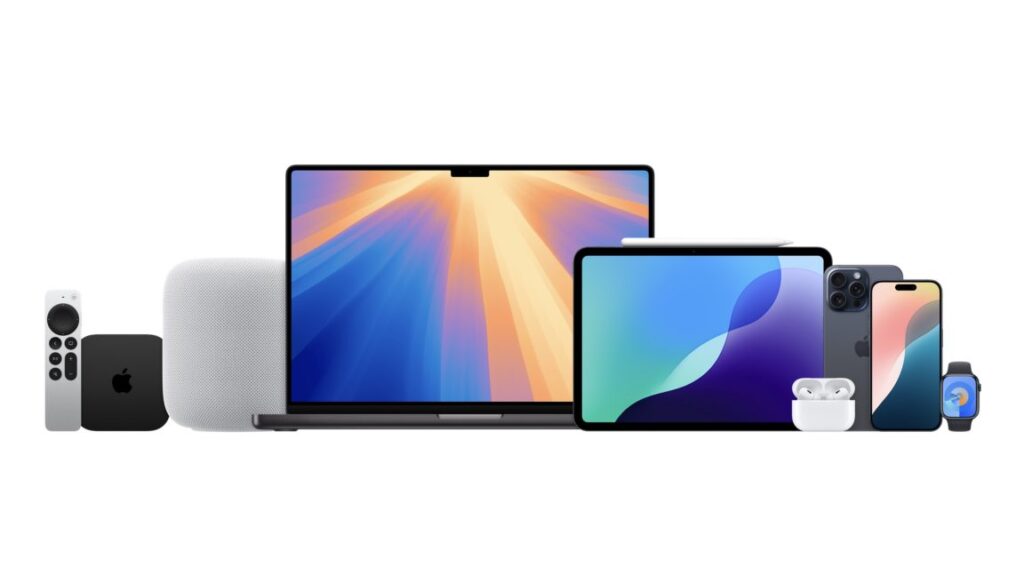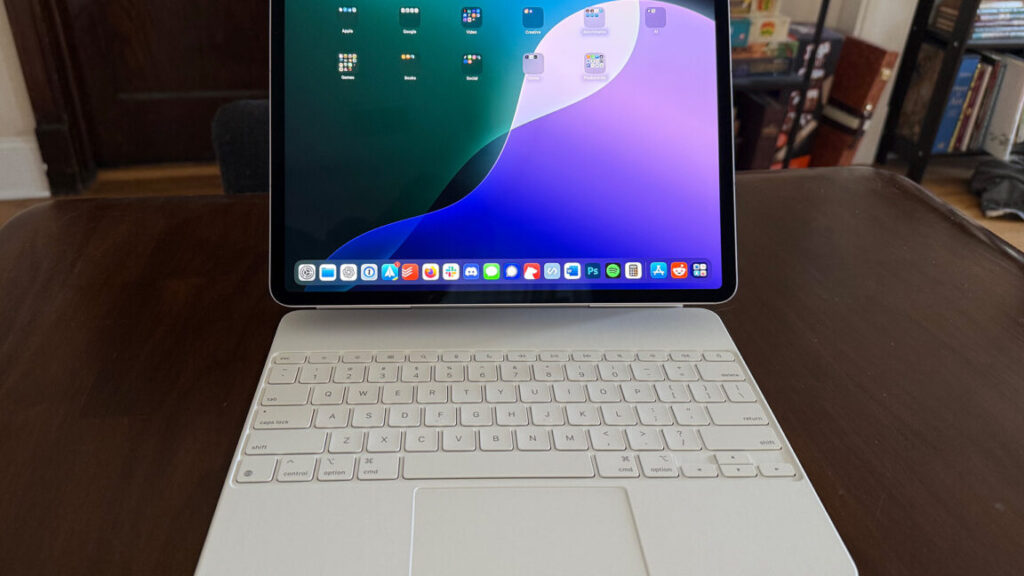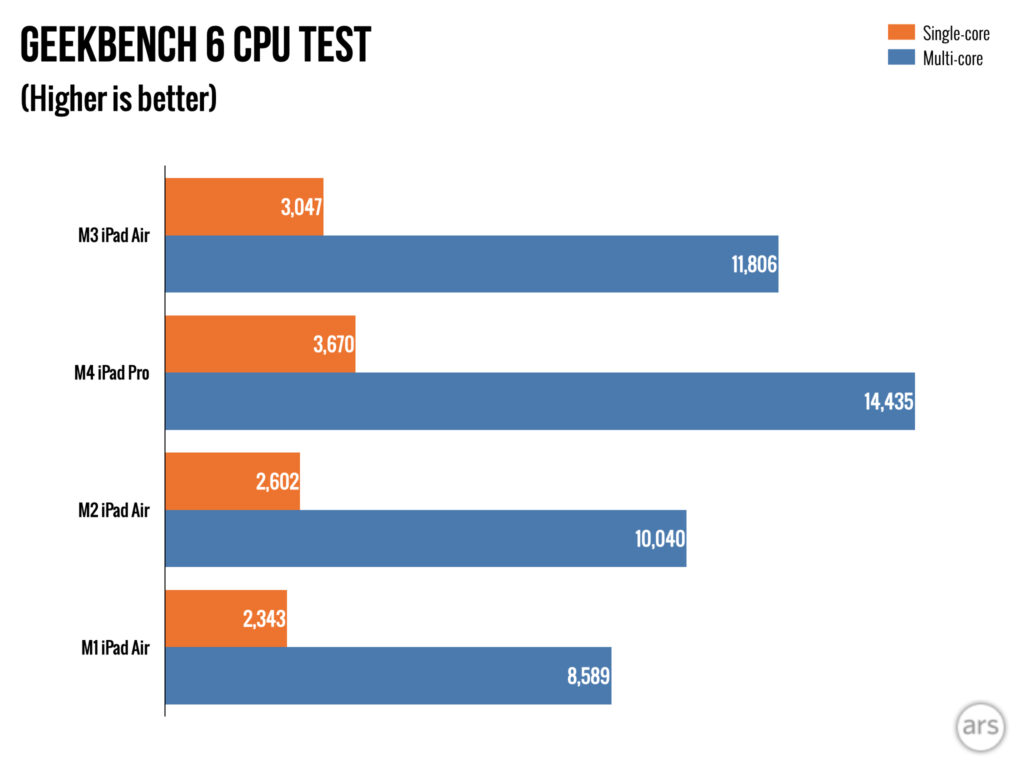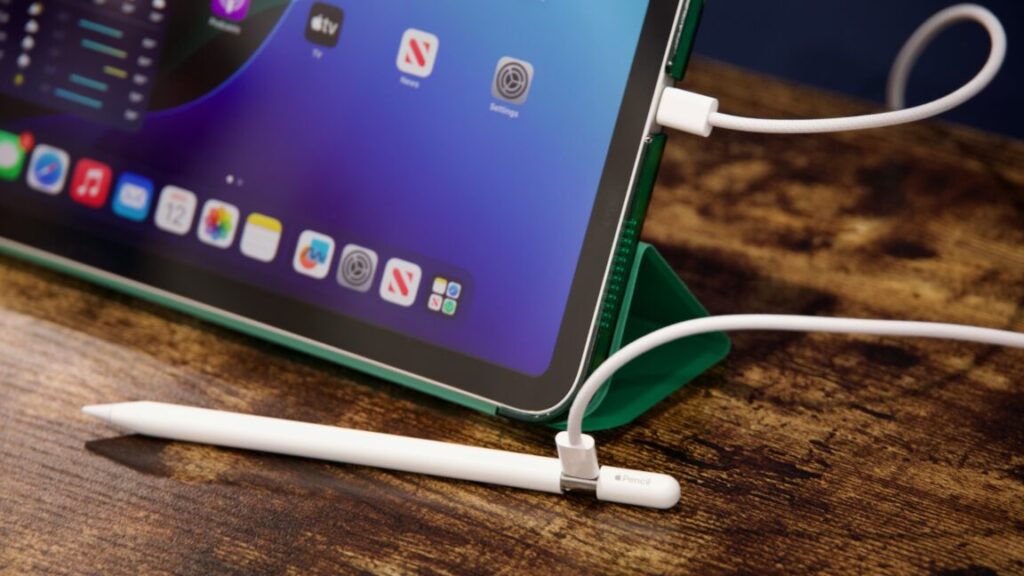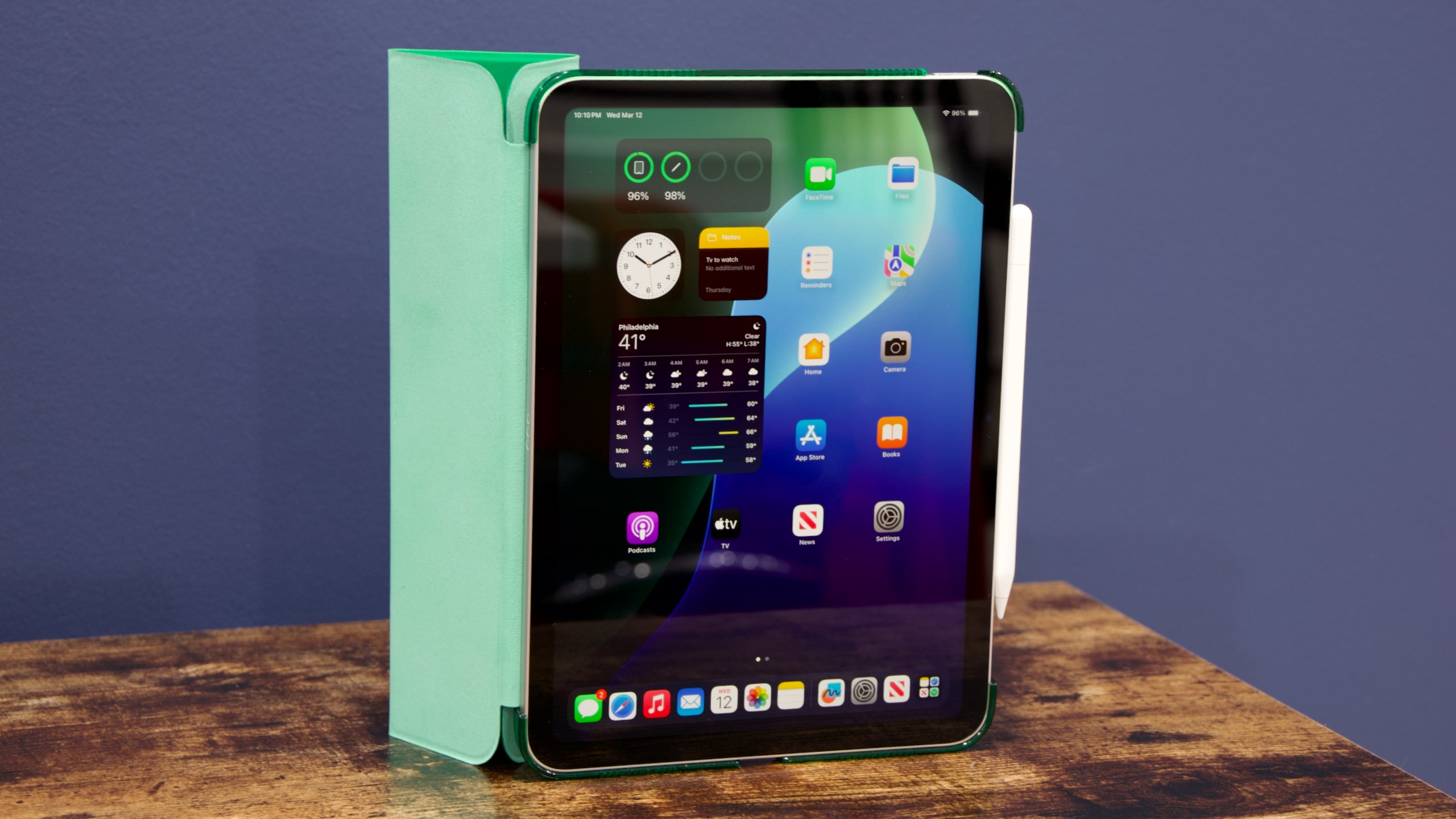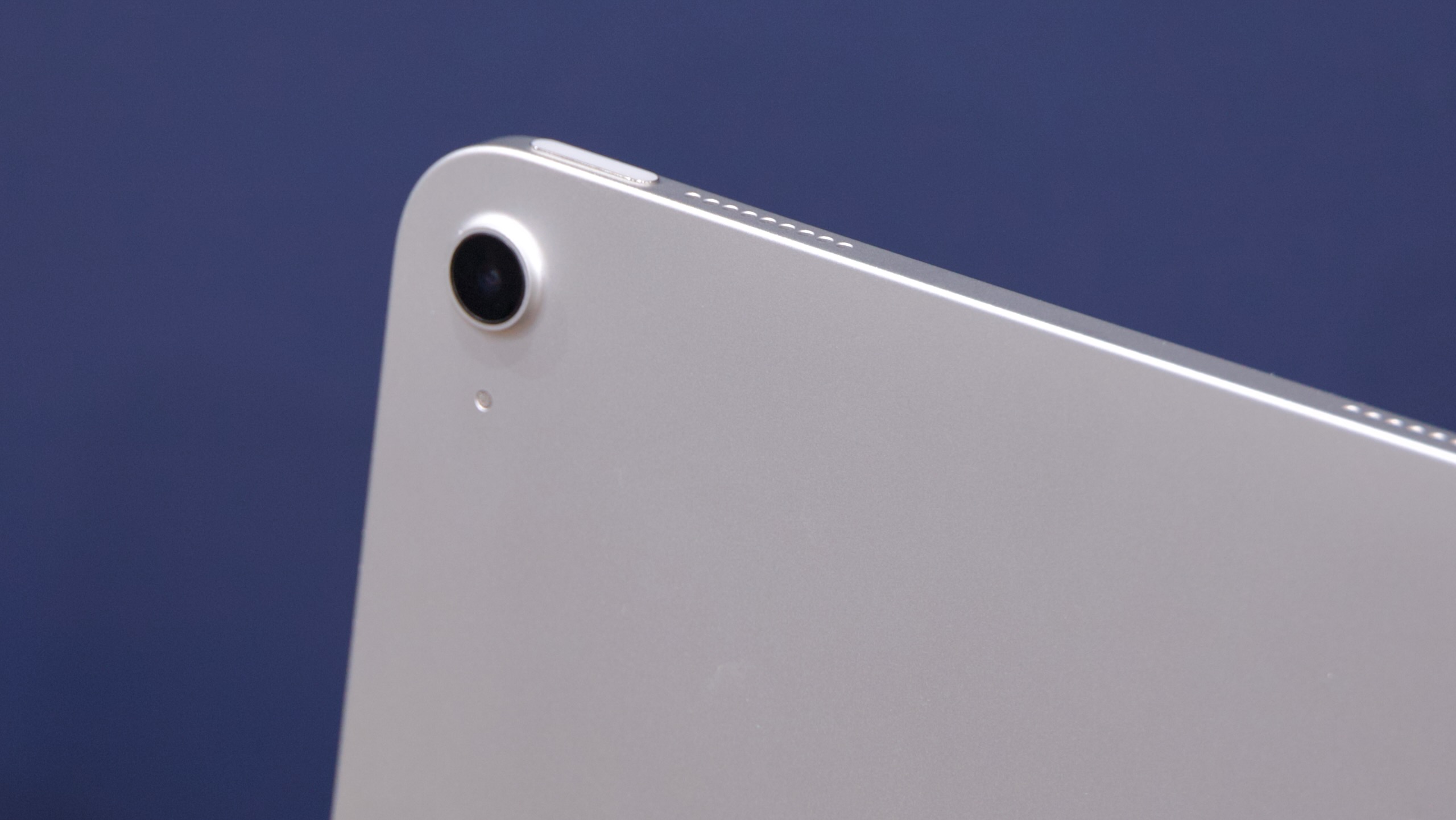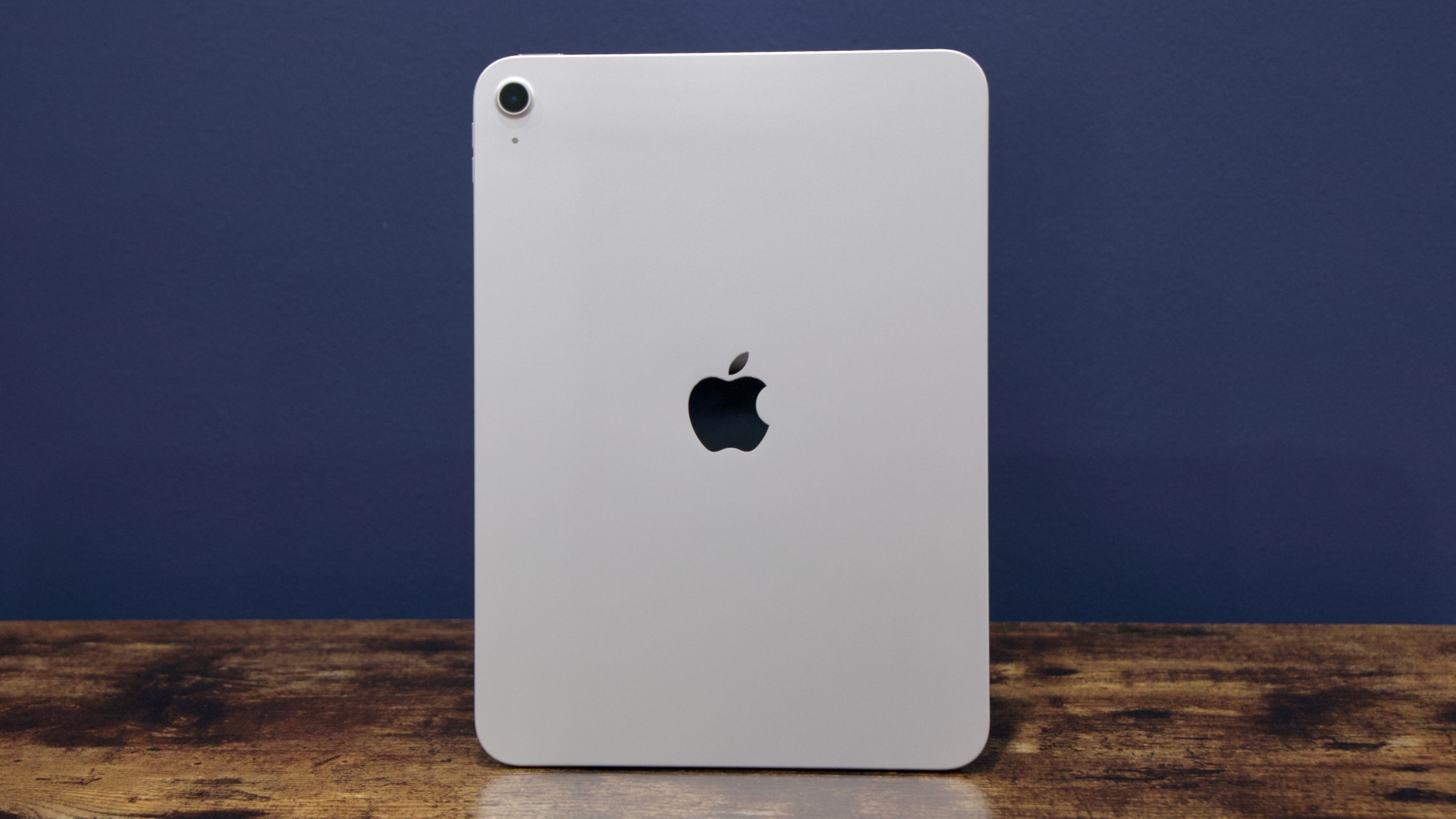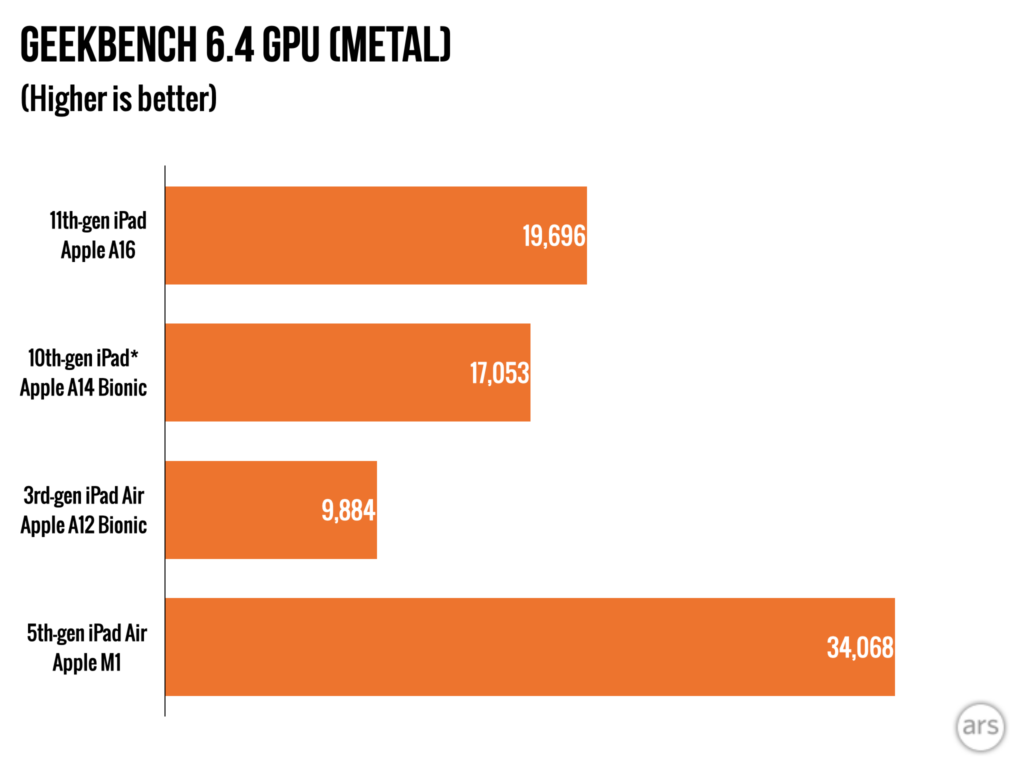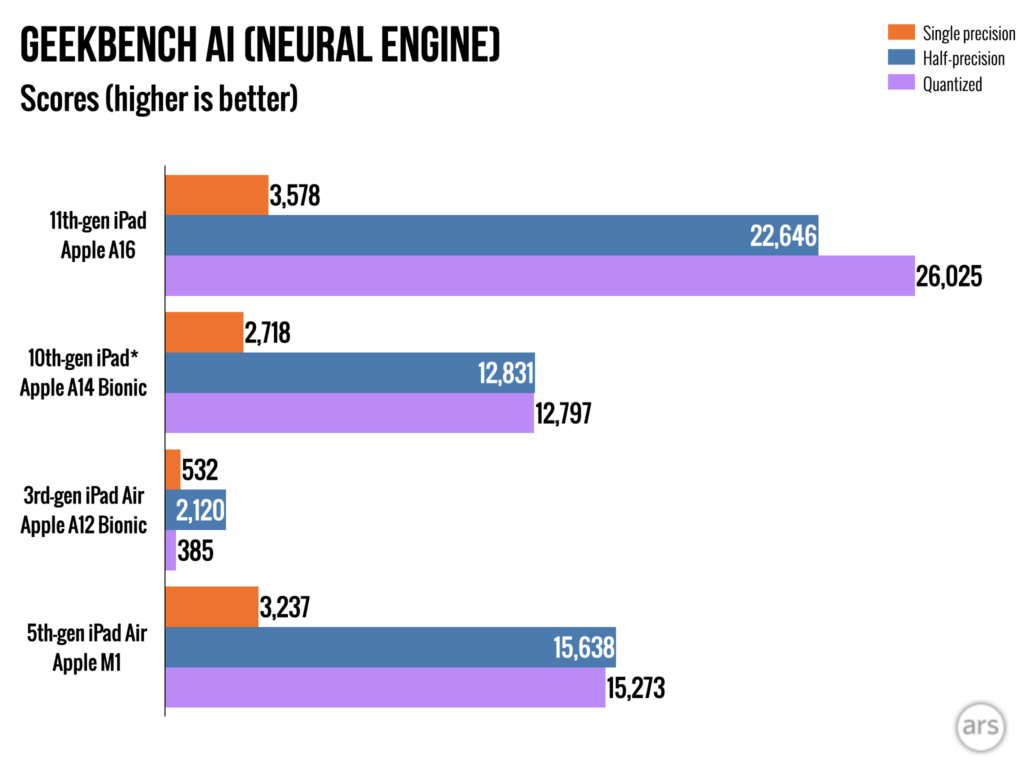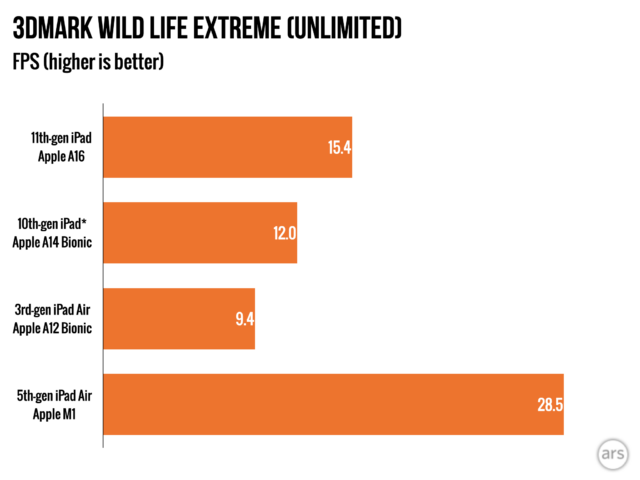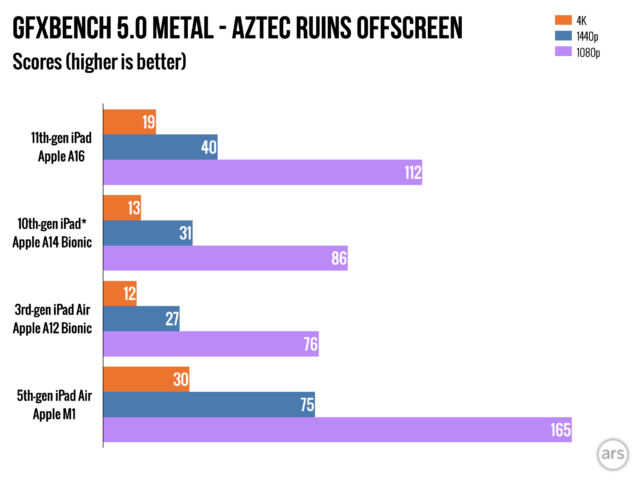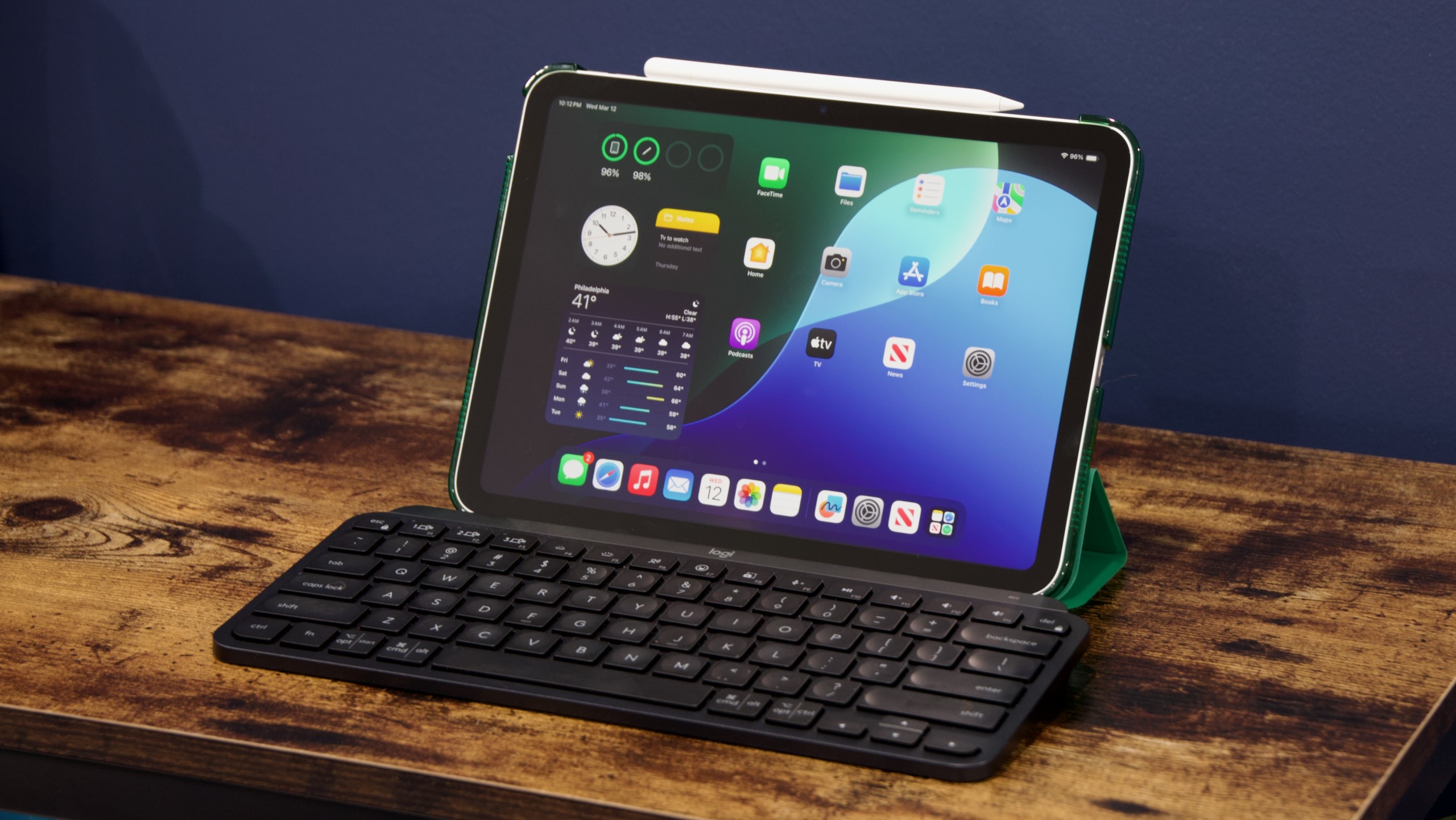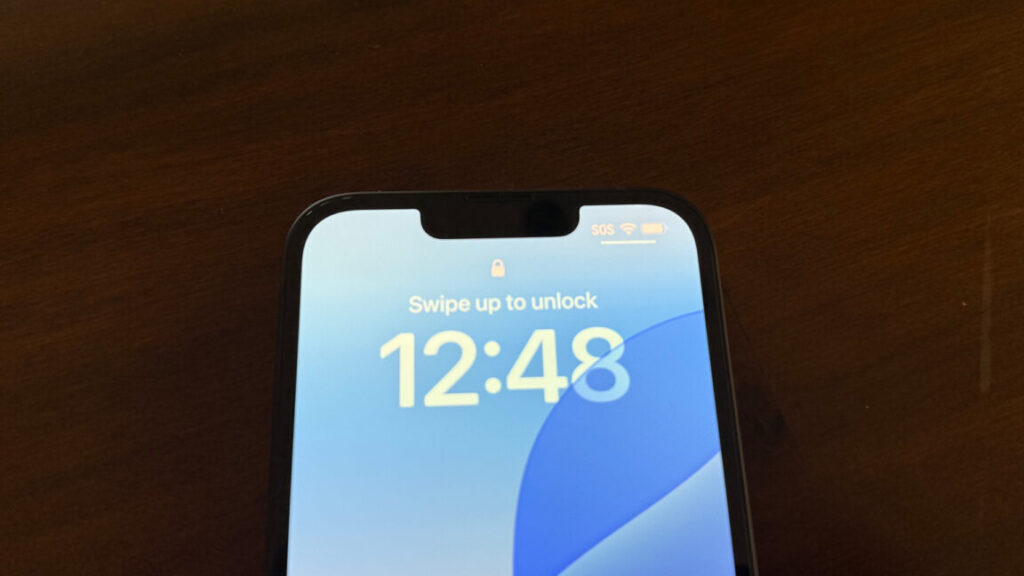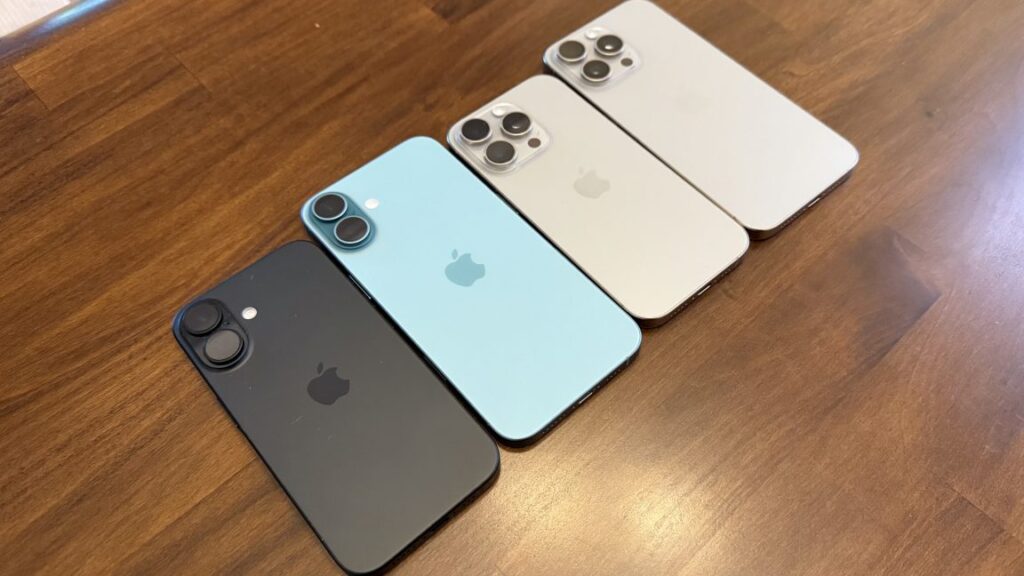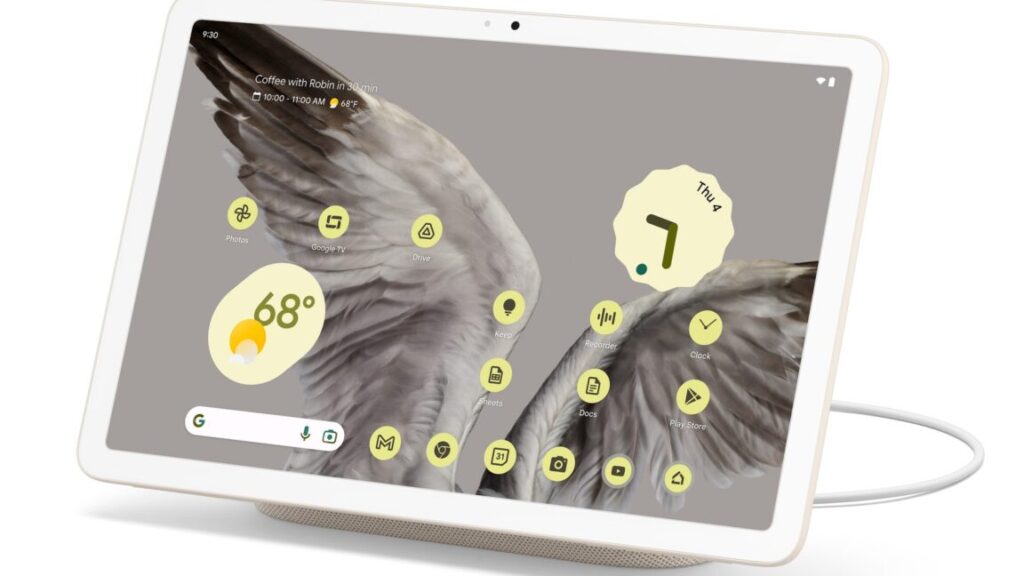Testing Apple’s M5 iPad Pro: Future-proofing for Apple’s perennial overkill tablet
This year’s iPad Pro is what you might call a “chip refresh” or an “internal refresh.” These refreshes are what Apple generally does for its products for one or two or more years after making a larger external design change. Leaving the physical design alone preserves compatibility with the accessory ecosystem.
For the Mac, chip refreshes are still pretty exciting to me, because many people who use a Mac will, very occasionally, assign it some kind of task where they need it to work as hard and fast as it can, for an extended period of time. You could be a developer compiling a large and complex app, or you could be a podcaster or streamer editing or exporting an audio or video file, or maybe you’re just playing a game. The power and flexibility of the operating system, and first- and third-party apps made to take advantage of that power and flexibility, mean that “more speed” is still exciting, even if it takes a few years for that speed to add up to something users will consistently notice and appreciate.
And then there’s the iPad Pro. Especially since Apple shifted to using the same M-series chips that it uses in Macs, most iPad Pro reviews contain some version of “this is great hardware that is much faster than it needs to be for anything the iPad does.” To wit, our review of the M4 iPad Pro from May 2024:
Still, it remains unclear why most people would spend one, two, or even three thousand dollars on a tablet that, despite its amazing hardware, does less than a comparably priced laptop—or at least does it a little more awkwardly, even if it’s impressively quick and has a gorgeous screen.
Since then, Apple has announced and released iPadOS 26, an update that makes important and mostly welcome changes to how the tablet handles windowed multitasking, file transfers, and some other kinds of background tasks. But this is the kind of thing that isn’t even going to stress out an Apple M1, let alone a chip that’s twice as powerful.
All of this is to say: A chip refresh for an iPad is nice to have. This year’s will also come with a handy RAM increase for many buyers, the first RAM boost that the base model iPad Pro has gotten in more than four years.
But without any other design changes or other improvements to hang its hat on, the fact is that chip refresh years for the iPad Pro only really improve a part of the tablet that needs the least amount of improvement. That doesn’t make them bad; who knows what the hardware requirements will be when iPadOS 30 adds some other batch of multitasking features. But it does mean these refreshes don’t feel particularly exciting or necessary; the most exciting thing about the M5 iPad Pro means you might be able to get a good deal on an M4 model as retailers clear out their stock. You aren’t going to notice the difference.
Design: M4 iPad Pro redux
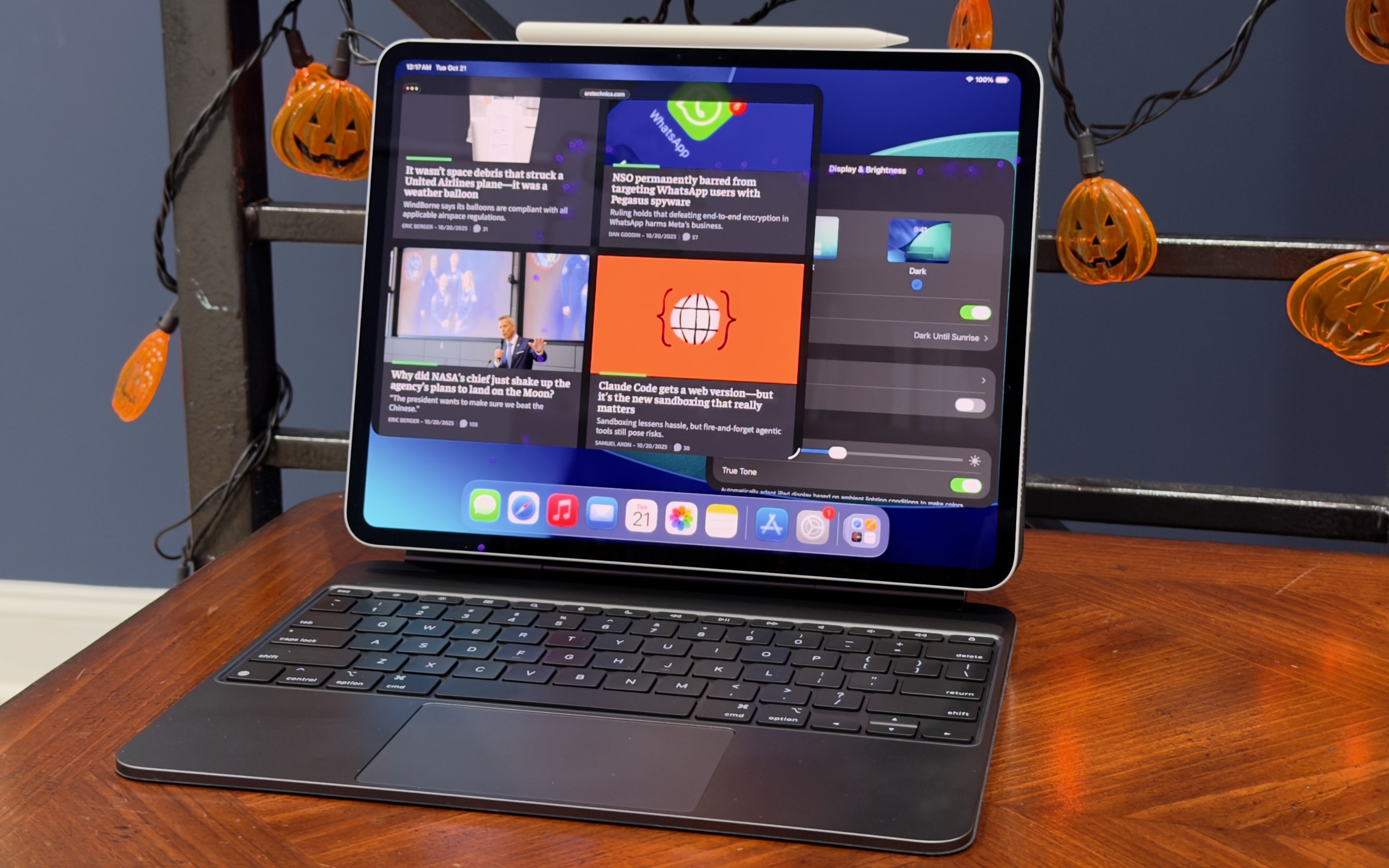
The 13-inch M5 iPad Pro in its Magic Keyboard accessory with the Apple Pencil Pro attached. Credit: Andrew Cunningham
Lest we downplay this tablet’s design, the M4 version of the iPad Pro was the biggest change to the tablet since Apple introduced the modern all-screen design for the iPad Pro back in 2018. It wasn’t a huge departure, but it did introduce the iPad’s first OLED display, a thinner and lighter design, and a slightly improved Apple Pencil and updated range of accessories.
As with the 14-inch M5 MacBook Pro that Apple just launched, the easiest way to know how much you’ll like the iPad Pro depends on how you feel about screen technology (the iPad is, after all, mostly screen). If you care about the 120 Hz, high-refresh-rate ProMotion screen, the option to add a nano-texture display with a matte finish, and the infinite contrast and boosted brightness of Apple’s OLED displays, those are the best reasons to buy an iPad Pro. The $299/349 Magic Keyboard accessory for the iPad Pro also comes with backlit keys and a slightly larger trackpad than the equivalent $269/$319 iPad Air accessory.
If none of those things inspire passion in you, or if they’re not worth several hundred extra dollars to you—the nano-texture glass upgrade alone adds $700 to the price of the iPad Pro, because Apple only offers it on the 1TB and 2TB models—then the 11- and 13-inch iPads Air are going to give you a substantively identical experience. That includes compatibility with the same Apple Pencil accessory and support for all the same multitasking and Apple Intelligence features.
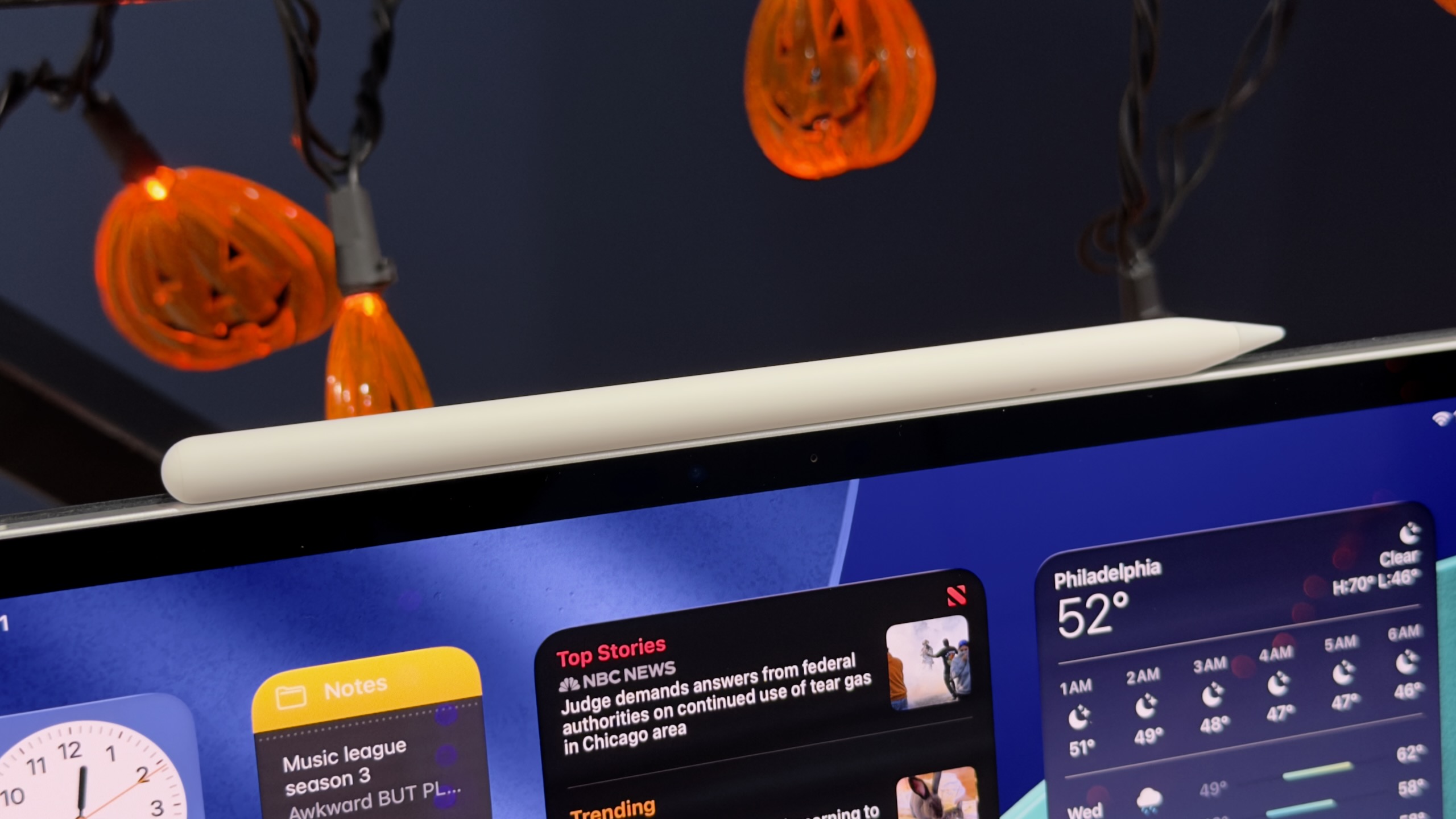
The M5 iPad Pro supports the same Apple Pencil Pro as the M4 iPad Pro, and the M2 and M3 iPad Air. Credit: Andrew Cunningham
One other internal change to the new iPad Pro, aside from the M5, is mostly invisible: Wi-Fi, Bluetooth, and Thread connectivity provided by the Apple N1 chip, and 5G cellular connectivity provided by the Apple C1X. Ideally, you won’t notice this swap at all, but it’s a quietly momentous change for Apple. Both of these chips cap several years of acquisitions and internal development, and further reduce Apple’s reliance on external chipmakers like Qualcomm and Broadcom, which has been one of the goals of Apple’s A- and M-series processors all along.
There’s one last change we haven’t really been able to adequately test in the handful of days we’ve had the tablet: new fast-charging support, either with Apple’s first-party Dynamic Power Adapter or any USB-C charger capable of providing 60 W or more of power. When using these chargers, Apple says the tablet’s battery can charge from 0 to 50 percent in 35 minutes. (Apple provides the same battery life estimates for the M5 iPads as the M4 models: 10 hours of Wi-Fi web usage, or 9 hours of cellular web usage, for both the 13- and 11-inch versions of the tablet.)
Two Apple M5 chips, two RAM options
Apple sent us the 1TB version of the 13-inch iPad Pro to test, which means we got the fully enabled version of the M5: four high-performance CPU cores, six high-efficiency GPU cores, 10 GPU cores, a 16-core Neural Engine, and 16GB of RAM.
Apple’s Macs still offer individually configurable processor, storage, and RAM upgrades to users—generally buying one upgrade doesn’t lock you into buying a bunch of other stuff you don’t want or need (though there are exceptions for RAM configurations in some of the higher-end Macs). But for the iPads, Apple still ties the chip and the RAM you get to storage capacity. The 256GB and 512GB iPads get three high-performance CPU cores instead of four, and 12GB of RAM instead of 16GB.
For people who buy the 256GB and 512GB iPads, this does amount to a 50 percent increase in RAM capacity from the M1, M2, and M4 iPad Pro models, or the M1, M2, and M3 iPad Airs, all of which came with 8GB of RAM. High-end models stick with the same 16GB of RAM as before (no 24GB or 32GB upgrades here, though the M5 supports them in Macs). The ceiling is in the same place, but the floor has come up.
Given that iPadOS is still mostly running on tablets with 8GB or less of RAM, I don’t expect the jump from 8GB to 12GB to make a huge difference in the day-to-day experience of using the tablet, at least for now. If you connect your iPad to an external monitor that you use as an extended display, it might help keep more apps in memory at a time; it could help if you edit complex multi-track audio or video files or images, or if you’re trying to run some kind of machine learning or AI workflows locally. Future iPadOS versions could also require more than 8GB of memory for some features. But for now, the benefit exists mostly on paper.
As for benchmarks, the M5’s gains in the iPad are somewhat more muted than they are for the M5 MacBook Pro we tested. We observed a 10 or 15 percent improvement across single- and multi-core CPU tests and graphics benchmark improvements that mostly hovered in the 15 to 30 percent range. The Geekbench 6 Compute benchmark was one outlier, pointing to a 35 percent increase in GPU performance; it’s possible that GPU or rendering-heavy workloads benefit a little more from the new neural accelerators in the M5’s GPU cores than games do.
In the MacBook review, we observed that the M5’s CPU generally had higher peak power consumption than the M4. In the fanless iPad Pro, it’s likely that Apple has reined the chip in a little bit to keep it cool, which would explain why the iPad’s M5 doesn’t see quite the same gains.
The M5 and the 12GB RAM minimum does help to put a little more distance between the M3 iPad Air and the Pros. Most iPad workloads don’t benefit in an obvious user-noticeable way from the extra performance or memory right now, but it’s something you can point to that makes the Pro more “pro” than the Air.
Changed hardware that doesn’t change much
The M5 iPad Pro is nice in the sense that “getting a little more for your money today than you could get for the same money two weeks ago” is nice. But it changes essentially nothing for potential iPad buyers.
I’m hard-pressed to think of anyone who would be well-served by the M5 iPad Pro who wouldn’t have been equally well-served by the M4 version. And if the M4 iPad Pro was already overkill for you, the M5 is just a little more so. Particularly if you have an M1 or M2 ; People with an A12X or A12Z version of the iPad Pro from 2018 or 2020 will benefit more, particularly if you’re multitasking a lot or running into limitations or RAM complaints from the apps you’re using.
But even with the iPadOS 26 update, it still seems like the capabilities of the iPad’s software lags behind the capabilities of the hardware by a few years. It’s to be expected, maybe, for an operating system that has to run on this M5 iPad Pro and a 7-year-old phone processor with 3GB of RAM.
I am starting to feel the age of the M1 MacBook Air I use, especially if I’m pushing multiple monitors with it or trying to exceed its 16GB RAM limit. The M1 iPad Air I have, on the other hand, feels like it just got an operating system that unlocks some of its latent potential. That’s the biggest problem with the iPad Pro, really—not that it’s a bad tablet, but that it’s still so much more tablet than you need to do what iPadOS and its apps can currently do.
The good
- A fast, beautiful tablet that’s a pleasure to use.
- The 120Hz ProMotion support and OLED display panel make this one of Apple’s best screens, period.
- 256GB and 512GB models get a bump from 8GB to 12GB of memory.
- Maintains compatibility with the same accessories as the M4 iPad Pro.
The bad
- More iPad than pretty much anyone needs.
- Passively cooled fanless Apple M5 can’t stretch its legs quite as much as the actively cooled Mac version.
- Expensive accessories.
The ugly
- All other hardware upgrades, including the matte nano-texture display finish, require a $600 upgrade to the 1TB version of the tablet.
Andrew is a Senior Technology Reporter at Ars Technica, with a focus on consumer tech including computer hardware and in-depth reviews of operating systems like Windows and macOS. Andrew lives in Philadelphia and co-hosts a weekly book podcast called Overdue.
Testing Apple’s M5 iPad Pro: Future-proofing for Apple’s perennial overkill tablet Read More »

